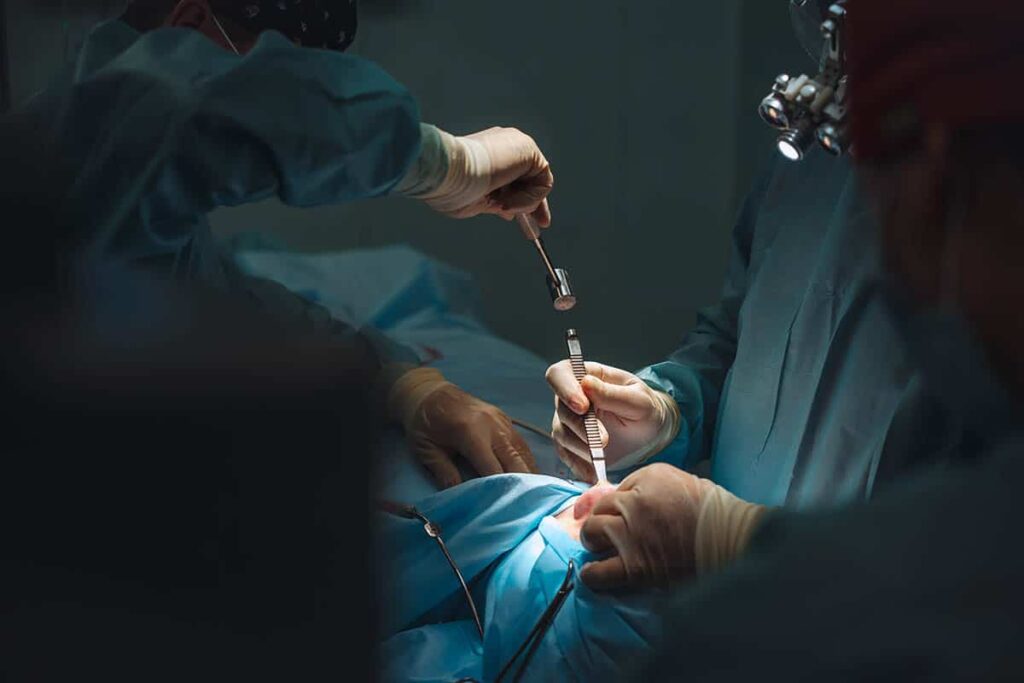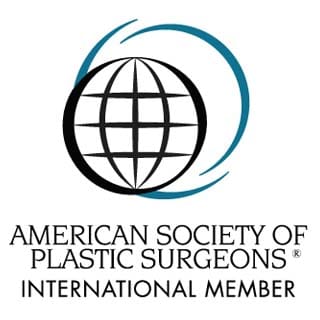
In this post, we will dig into a highly debated topic in Singapore: closed rhinoplasty recovery. Patients are interested to learn what they are getting themselves into and how long it will take before they are back to normal. Let this be your guide to your postoperative journey, spanning from the first private consultation to the last visit. In other words, if you are curious to know what happens one month after surgery or even 12-14 months post-op, stick with us.
Popularly dubbed as a nose job, this treatment is carried out to alter the features of the nose and enhance nasal proportions. On the one hand, we have cosmetic surgery that impacts aesthetics, and on the other, we have restorative surgery that provides functional changes to the nasal structure. There are two types of rhinoplasty: open and closed approach.
It involves making trans-columellar incisions (external incisions across the columella) into the skin, allowing for more accuracy when reshaping the general framework of the nose. However, it also leaves external scars (permanent scarring at that). It is performed under twilight sedation or general anaesthesia. The skin is lifted and dissected, which causes more nasal swelling during the recovery phase. Yet, the open approach allows for more flexibility in the refinement of the nose and better dorsal hump reduction. It can give a nose bridge lift too.
With respect to closed rhinoplasty, all surgical incisions are made inside the nostrils and out of sight, which is why the scarring is hidden away. It takes less time to complete. Board-certified plastic surgeons opt for this one when there are minor nasal defects to fix. Not everybody makes a great candidate for it, and these things are discussed during the initial consultation.
It has to be said that the open rhinoplasty recovery process is lengthier. This is because the procedure is more invasive, although it provides better flexibility in the refinement of the nose. The incision creates a bigger wound and prolongs the healing process.
Being a small surgical procedure, rhinoplasty is often paired with other cosmetic treatments such as facelifts and double eyelid surgery (blepharoplasty). It goes without saying that this can make the postoperative period longer.
The cost of rhinoplasty ranges from $3,000 to $12,000. A lot of factors go into the bill, from anaesthesia to board-certified plastic surgeon fees, technique, prescribed medications, plastic surgery facility, follow-up appointments, private consultation (virtual consultations may be charged too), etc.

When it comes to long-term healing, the recovery period of both open and closed rhinoplasty may differ in that the outcome is delayed in patients who had the latter cosmetic procedure. The initial healing process is pretty much the same – about 1-2 weeks depending on the case. With open rhinoplasty, your sutures will have to be removed several days post-op. In regard to the closed rhinoplasty procedure, dissolvable sutures are used instead.
However, after this period, your job is not over. Regardless of whether we’re talking about Korean rhinoplasty recovery time or open rhinoplasty recovery time, you will need to allocate some time for rest and follow any instructions your board-certified plastic surgeon has given during your initial consultation. This includes anything from oral medication to exercise and work. If it makes you feel better, you can keep a revision rhinoplasty recovery blog or journal so as not to miss out on something important.
First, let’s talk about the swelling. Every prospective patient dreads the thought that they will have to walk with swollen noses for weeks but, really, this shouldn’t be much of a concern. Keep in mind that the majority of nasal swelling will disappear much more quickly where the skin is thin. This means that the nasal tip will be the last to show signs of healing.
In most cases, it will take a week or so for the swelling to subside, so don’t worry about it. Because the skin is not moved around, the swelling will definitely be less severe than it is in open rhinoplasty.
Now, there is also going to be some post-rhinoplasty bruising afterwards. With closed rhinoplasty, where less work is done, it will be less prominent. It will go away after 6-7 days following the treatment. It is important to understand that the extent of the bruising and swelling will differ per patient and will depend on many factors such as the surgical technique used, a person’s overall health condition, age, and individual body response.
Other than that, you can expect to experience irregularities, lumps, nasal drainage, sinus blockage, and other temporary conditions during those first days after surgery.
Last but not least, the scarring with the closed rhinoplasty approach is internal and therefore not apparent.
Your medical professionals will prescribe a saline nasal spray to use until the swelling diminishes. It will keep your nasal passages moisturised.
The first 5 days post-op, you will be wearing a splint that will keep your nose fixed in place so it can heal properly. Keep your head elevated using a few pillows when you go to bed at night. Head elevation will keep the nose straight, which will allow proper drainage of fluids, in case there are any. It will also put less pressure on the area.
You should by no means engage in any kind of strenuous activities, let alone contact sports like basketball, rugby, or football. Light walking is encouraged to keep the blood flow steady. But don’t take it too far. You will begin to increase your cardiovascular activities little by little when your body is ready for it.

Try not to blow your nose the first two weeks after surgery, although it might be congested due to the swollen nasal tissues. This one is common sense but still needs to be reminded. Straining your nose may lead to bleeding, which will start the clock on the rhinoplasty healing time all over again, including additional bruising.
At the third week’s mark, around 30% of the swelling will be gone with regard to bulbous tip rhinoplasty recovery and all rhinoplasty procedures. The swelling in the bridge is the last to fade away. You don’t have to see a board-certified plastic surgeon at this point and are not likely to need office treatment for several more weeks. This is about the time you return to your normal activities. After a while, you will be scheduled for follow-up treatments.

Four weeks into your open or closed rhinoplasty recovery, you will be feeling like your best self again. The swelling will have gone completely. The evidence of having had surgery may still be lingering, but you will pay less and less attention to it, plus people will barely notice it. You should not wear glasses for 5 weeks if the surgeon had to reposition your nasal bones.
Although at this point you will be able to see a big difference in your nose profile, it will take time for the results to fully settle in. Still, you will enjoy your new appearance, and everyone around you will see it too.
By the end of the third month, the nose looks even better. The results materialise within 12-14 months after surgery which is when the tissue softens completely, and further maturation occurs. You will be encouraged to have another appointment at the plastic surgery facility every year from now on, but only if you want to. The majority of rhinoplasty patients don’t feel the need to book a visit because their health condition is satisfactory.
Overall, the initial recovery period is 1-2 weeks and much of the discomfort is resolved by the end of the first month. Swelling persists for an extended period of time with the open approach.
On the other hand, closed rhinoplasty does not provide a good operating field to reshape the cartilage, so the cartilage framework has to be reduced instead. In terms of open rhinoplasty, if the board-certified plastic surgeon is skilled and experienced enough, they can preserve a strong cartilage framework.
Roughly speaking, the initial nose job recovery period will keep you out of work for about two weeks or so. But you had better stay away from strenuous exercise for a month. Long-term healing takes a few more months and follow-up appointments might need to be scheduled with board-certified doctors.

It depends on the technique and some other factors but overall, about 1.5 to 3 hours is a good timeframe to put on it. During this time, an experienced rhinoplasty surgeon can work on nasal tip structures deformities, dorsal hump reduction, and other aesthetic refinements
You should wait at least 4 weeks before you can have any vigorous physical activity post-op.
The very procedure is not painful at all since it is executed under anaesthesia. After the treatment, there will be some discomfort in the targeted area which can be managed with oral medication. The pain factor really isn’t as bad as people think.
This is a type of rhinoplasty that aims to correct issues that the primary rhinoplasty procedure caused or could not solve. In most cases, it calls for cartilage grafting. If such is done, the healing phase occurs for an extended period of time. It can help fix nasal drooping, breathing issues, wide nasal bones, and other nasal defects, as well as restore nasal function.
You should be at least 15-16 years of age, and if you are under 21, you will need parental consent. Before you have rhinoplasty, you ought to make sure your nasal anatomy has developed in full.
Nose jobs are quite safe procedures. It is unlikely that patients develop long-term complications as long as you find the most qualified doctor. There may be difficulty breathing through the nose, septal perforation, and permanent numbness around the treated area. However, this happens rarely. The majority of concerns are directed at the results, which aren’t the best unless you put your trust in an experienced surgeon.
They will measure your potential risk factors and see if you are suitable for a nose job. Remember that rhinoplasty has its limitations; it is important to acknowledge that and have realistic expectations. Because this is not an emergency treatment, you should always notify your practitioner if any health problems occur prior to surgery time.
Rhinoplasty can correct an upturned nose, nasal bridge that is positioned too low or too high (nose bridge lift procedure), bulbous nose, functional breathing issues, etc.

Dr. Shenthilkumar Naidu (Dr. Shens) is a Ministry of Health accredited Consultatn Plastic Surgeon with extensive expertise in cosmetic and reconstructive surgery. He is renowned for his advanced techniques in body contouring and aesthetic enhancements. For more information, visit Shens Clinic.
Monday – Friday: 09:00am – 06:00pm
Saturday: 09:00am – 02:00pm
Sun and PH: Closed
(Strictly by appointment only)

Copyright ⓒ Shens Clinic | Privacy Policy | Terms and Conditions .